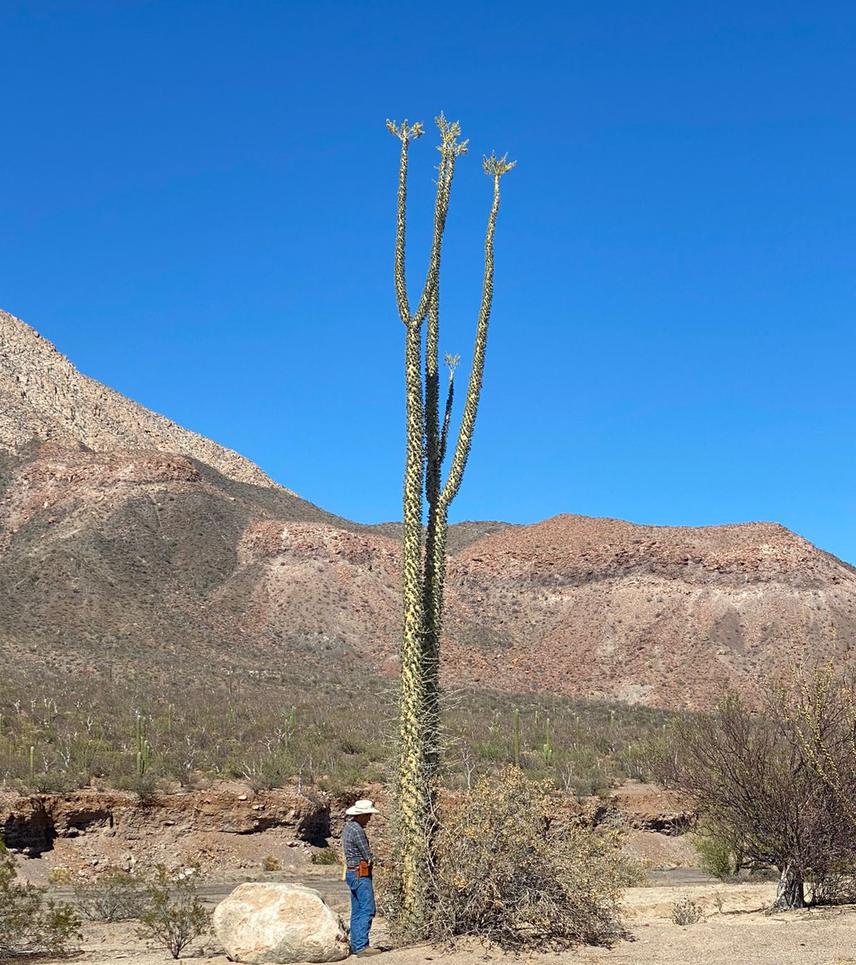Social media video featuring the project.
Josué Jacob Martínez-Noguez
Other projects
30 Oct 2023
Use of Unmanned Aerial Vehicles to Monitor Population Demography and Habitat Loss of the Cirio (Fouquieria columnaris)
a) Identify “evolutionarily significant units” (ESUs); this allows to have a notion of the genomic diversity of the populations of the Cirio, which helps to define priority areas for conservation, and It will be helpful for reforestation and propagation programs and to know the current conservation status of the species.
b) Define by population or unit, what environmental characteristics and requirements are fundamental for the distribution of the species. This allows knowing a panorama of the environmental conditions of the species and based on this, forecast scenarios of the species' response to scenarios of environmental change.
c) Define genes that have potentially participated in the adaptation of the species to environmental characteristics and that have favoured the species, giving it the ability to provide an adaptive response to specific environmental conditions, which would provide information on the adaptive potential of the species.
d) Generate ecological niche models for each genetically differentiated population in response to future climate change events. This would allow to spatially delimit ecological corridors and strategic conservation sites, which can be useful both today and in future climatic conditions.

The Cirio / Boojum tree, Fouquieria columnaris (Kellogg) Kellogg ex Curran is an iconic and endemic species of the Sonoran Desert in Mexico; where it is distributed mainly in the central desert in Baja California and sites with a discontinuous distribution such as Sierra de San Francisco, Las Tres Vírgenes volcano complex in Baja California Sur, Ángel de la Guarda island and Sierra Bacha in Sonora on the mainland Mexico. It is a species considered vulnerable under the IUCN Red List and a protected species under CITES. Different strategies for the conservation of the species have developed through both national governmental policies and international organizations' procedures. Still, there seems to be no interruption in the processes of decline population demography of the species. Therefore, I consider that it is necessary to understand the environmental and ecological dynamics that impact the species to create effective strategies of conservation for Fouquieria columnaris.
I propose the use of methodologies such as the landscape genomics and the ecological niche modelling to base efforts for the conservation of one of the most important species of the Sonoran Desert. I seek to delineate conservation units based on different populations for proper management and to develop restoration programs like can be the reforestation activities. I will characterize the patterns of genetic variation of the F. columnaris and identify and quantify those key climatic and soil variables associated with that genetic diversity. Also, I will develop the modelling of the potential ecological niche of the species; this panorama will help me to have a better approach to our ability to understand modern patterns and then project future scenarios, thus identifying vulnerable or resilient populations. I want our information to land on practical management topics for the administrators of protected areas and to help delimit priority management areas and improve conservation and restoration strategies in future scenarios of climatic change.